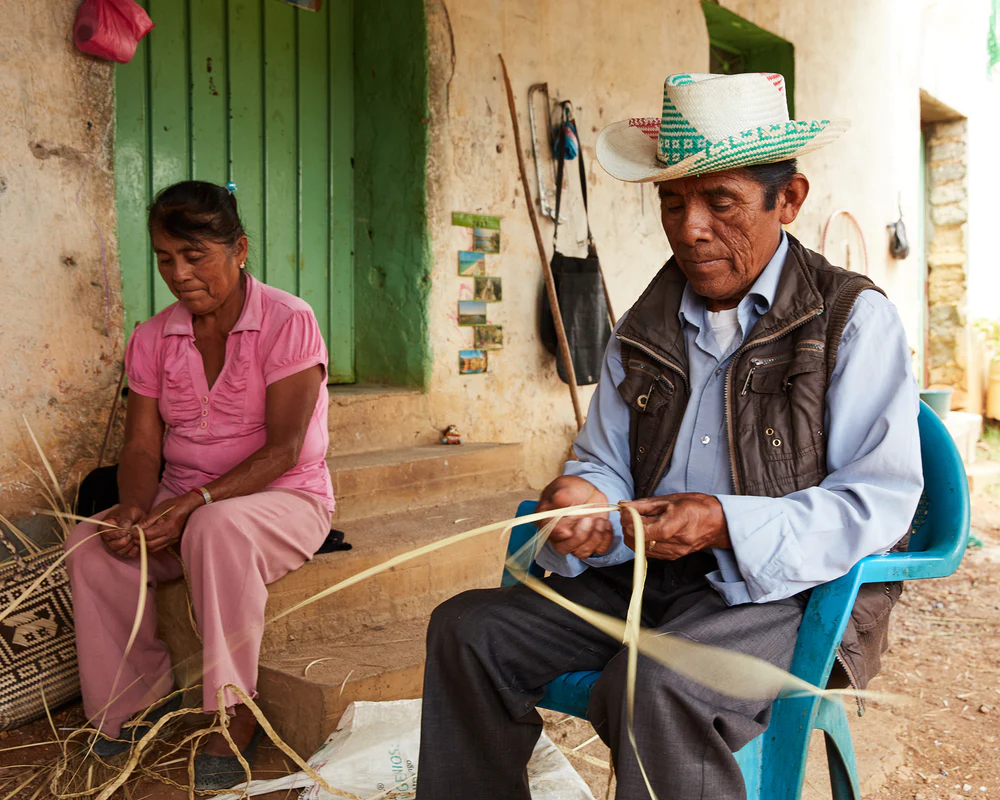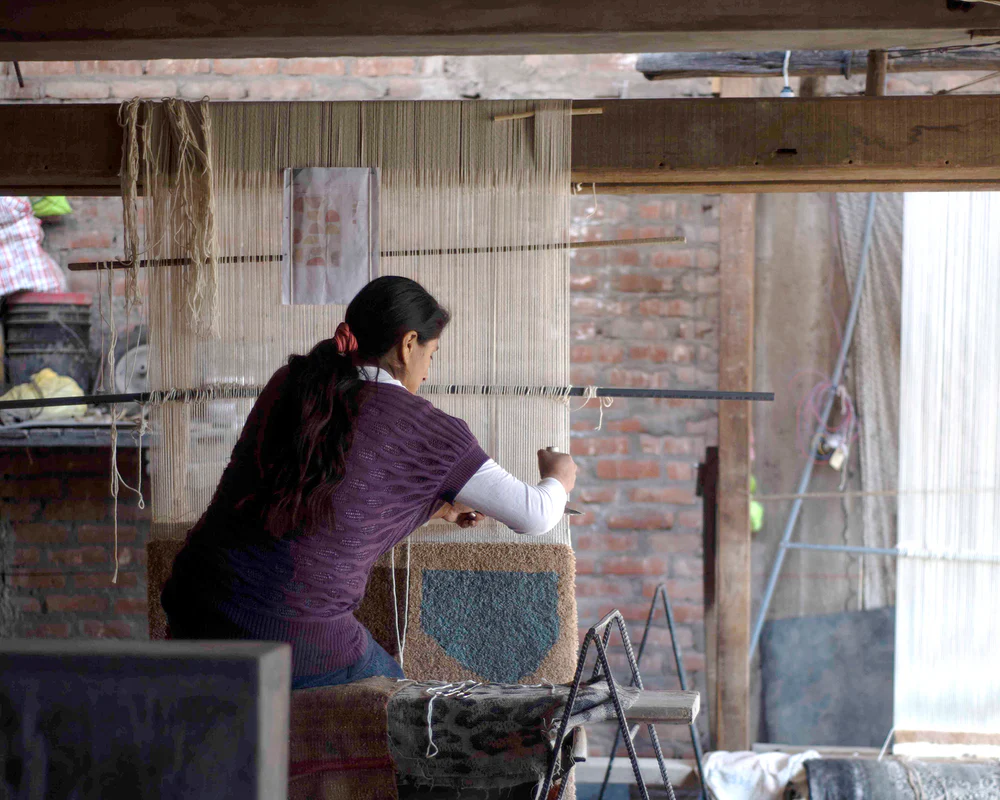We take a Bauhaus approach to the design process, considering technique and final use from the onset.
Backstrap Weaving
Backstrap weaving is an Indigenous textile technique commonly practiced by women. The loom is worn around the weaver’s hips limiting the textile width. Weavers use their body to create the tension needed to weave each design.

Braided & Sewn Palm
Dried palm is braided in long strips and then sewn into a circular round using a sewing machine.

Needle Felting
The felting process is manual by design. Long, loose, unwound swaths of wool fiber called Top are joined with a base fabric by puncturing both layers repeatedly with needles.

Flying Shuttle Loom
More automated than a traditional pedal loom. Made with a track so that the shuttle can be shot side to side rapidly by pulling on a cord. Allows wider pieces to be woven by a single weaver.

Hand Knitting
Knitting is a looping technique that uses one continuous thread of yarn and two needles.

Hybrid Crochet Knitting
Not requiring a machine or loom, this weaving technique can be done wherever the artisan chooses with single crochet hook needle. A repeated looping technique that integrates a stiffer yarn continuously running through.

Pedal Loom
This technique is used to create a majority of our pieces. The loom is set up and operated by hand. The weaver uses pedals to guide the weave, controlling which set of threads are lifted as they pass the yarn back and forth on shuttles.

Natural Dye
Natural dyeing is our response to creating more environmentally sustainable methods of production. Natural dyes are created in small-batch dye baths out of natural materials such as flowers, indigo, cochineal, nuts, and more.

Manual Knit Machine
Utilizing a series of hooks to create loops, the carriage carries the yarn over the open hooks and then closes them to let the last row of stitches fall. This process allows for simple stitches and color changes.

Vertical Looms
Typically used by multiple weavers at one time, vertical looms are designed to be collaborative and allow weavers to see more of their work as they create. Used for rugs and tapestries, the techniques often used on this loom are pile and knotting.


We work hard to source natural and sustainable materials. Each piece is the result of a careful production process, and we hope that you can see and feel the difference.
Our Materials
Explore MINNA




































